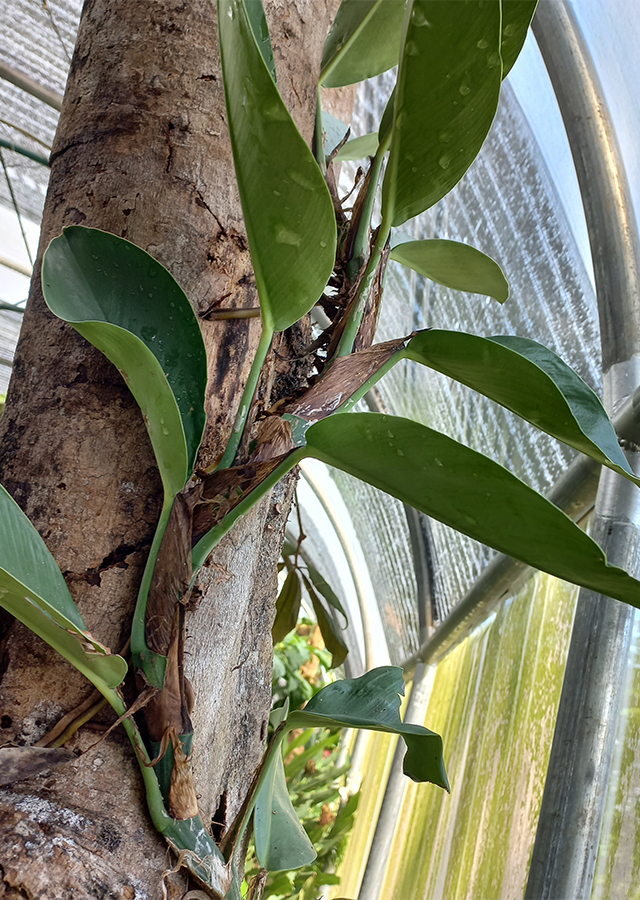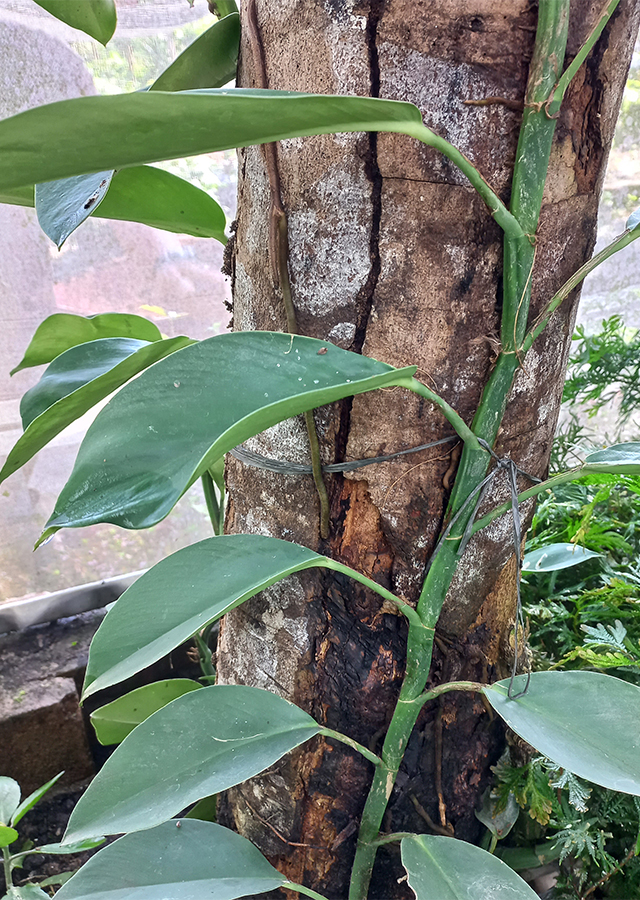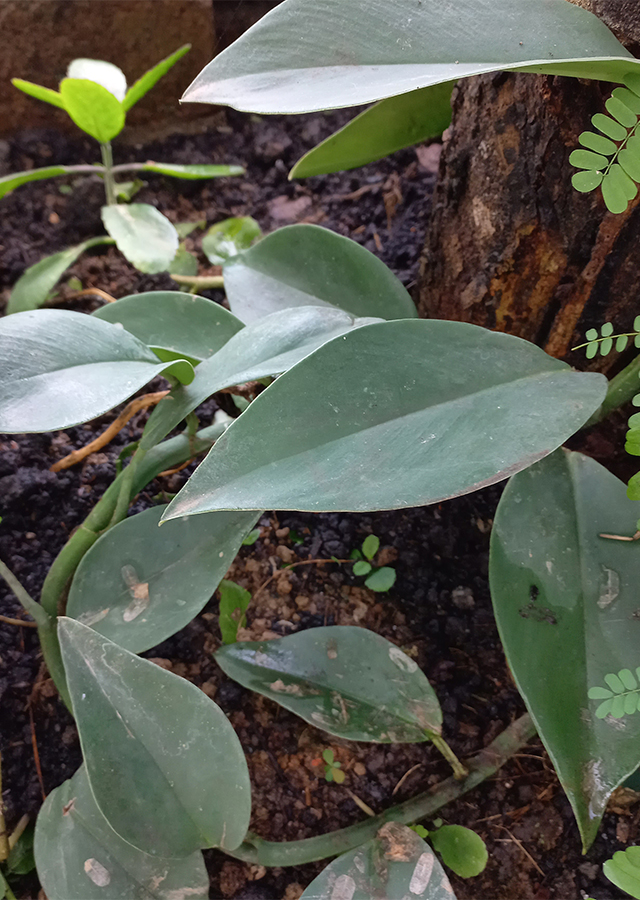Snake Climber
Scindapsus hederaceus Miq.
Araceae
Location in our garden
Green House



Synonym
Pothos hederaceus Zoll. & Moritzi
Scindapsus inquinatus Schott
Scindapsus poilanei Gagnep.
Habitus
Climbers. An evergreen perennial, climber plant, grows up to 20 m long
Part Used
Leaves
Stem
Growing Requirements
Need Shade
Habitat
Forest
Roadside
Shrublands
Overview
Scindapsus hederaceus is native to Indo-China to West and Central Malesia, and distributed to Malaysia, Thailand, Singapore, Indonesia (Sumatra, Java and Borneo), and probably to Philippines. It is a good native substitute for the numerous climber aroids grown ornamentally. It is suitable for planting in parks and gardens for its beautiful deep green foliage. It is also used for traditional medicine in Malaysia for rheumatism.
Vernacular Names
Akar lebang alih (Malay).
Agroecology
Found in dry evergreen forest, very rarely in peat swamp forest, on sandstone, sometimes on limestone. It grows in lowland and lower montane forests up to 1,500 m altitude on rocks and trees. Prefers semi-shade to full shade. Requires moderate water, and moist, fertile, loamy soils.
Morphology
- Roots - clasping roots.
- Stem - subterranean stem a subglobose, stoloniferous tuber, up to 4 cm across and 2 cm high, white, with stolons to 10 × 1 cm, green, mottled grey and pink.
- Leaves - alternate, simple and entire, stalked leaves have deep green elliptic to broadly lance-shaped leaf blades that are 10–21 by 3–8.5 cm.
- Flowers - found on a cylindrical, creamy white, 2.5–7 cm-long shoot (spadix) enclosed by a boat-shaped, yellowish-green, 4–8 cm-long, modified leaf (spathe).
- Fruit - red-orange when ripe, 8–10 × 5–7 mm, top rounded, up to 3 seeds per berry.
- Seed - globose, 3–4 mm in diameter.
Cultivation
Propagated by seed (generative propagation), and by stem-cutting (vegetatively).
Chemical Constituents
No found data on this. Need further research.
Traditional Medicinal Uses
- Studies have suggested stimulant, diaphoretic, aphrodisiac, carminative and anthelmintic properties.
- Studies have shown the plant has anti-inflammatory, antidiarrheal, antiprotozoal, and antipyretic activities.
- Traditionally used to stop diarrhea and as an expectorant to treat asthma. It also has antiprotozoal activity and is applied externally to treat rheumatism.
Part Used
Reference Sources
- Dave's Garden. (2021). Scindapsus Species-Scindapsus hederaceus. https://davesgarden.com/guides/pf/go/189219/. 24-12-2021.
- Islam, M.M., et al. (2017). Pharmacological Investigation on Ethanol Extract of Scindapsus hederaceus Miq. Bangladesh Pharmaceutical Journal, Vol.20(1):85. DOI:10.3329/bpj.v20i1.32097.
- Kew Royal Botanic Gardens. (No date). Scindapsus hederaceus Miq. https://powo.science.kew.org/taxon/urn:lsid:ipni.org:names:88882-1. 24-12-2021.
- Malaysia Biodiversity Information System. (2021). Scindapsus hederaceus. https://www.mybis.gov.my/sp/16834. 24-12-2021.
- National Park of Singapore. (2021). Flora & Fauna Web: Scindapsus hederaceus Schott. https://www.nparks.gov.sg/florafaunaweb/flora/5/6/5699. 24-12-2021.

